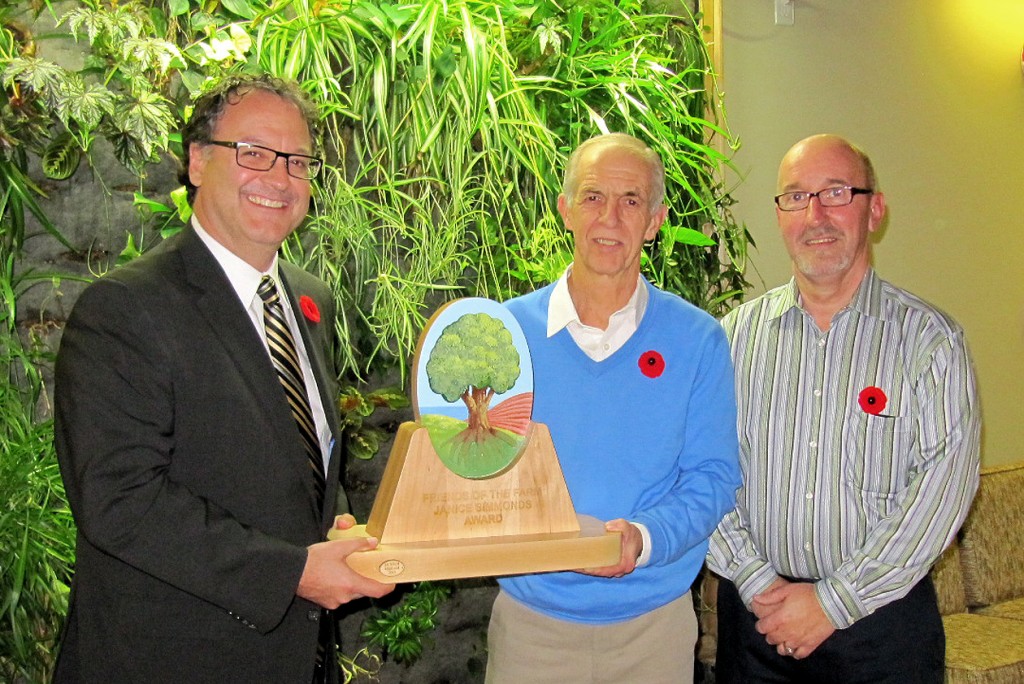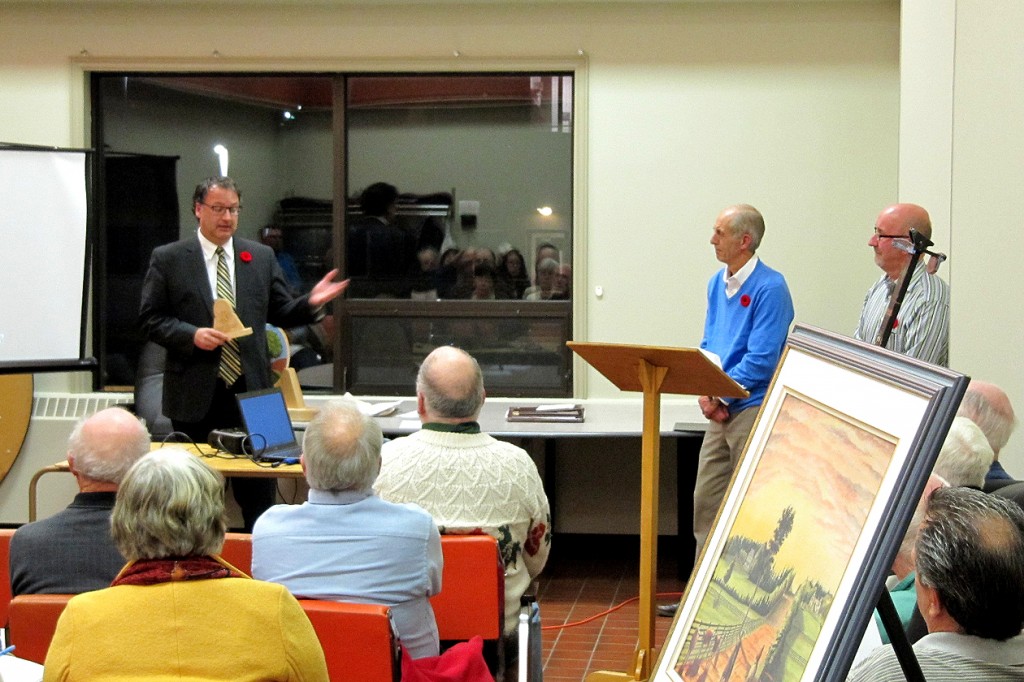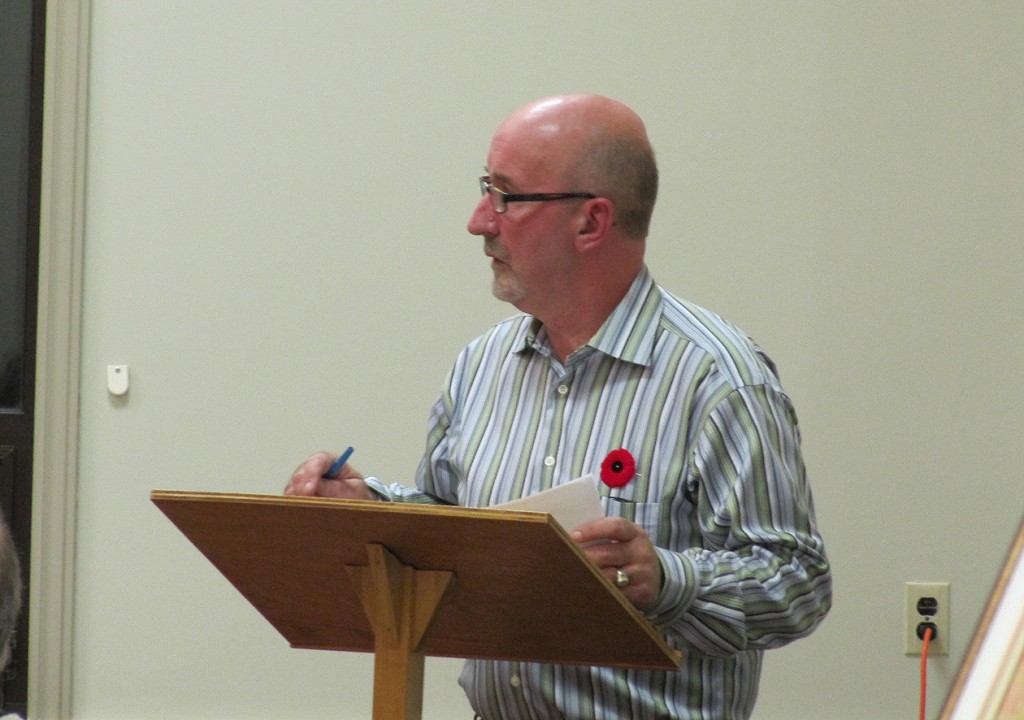CHARLOTTETOWN EXPERIMENTAL FARM
100 Years of Community Connection and Innovative Research
The Charlottetown Experimental Farm was established in 1909, on the edge of Charlottetown.The Farm was established in response to requests from farmers and farm leaders on PEI. The land was not as productive as it had been in earlier years; and the crops being grown had been developed elsewhere. Many farmers wondered if such crops were adapted to PEI.
In 1909, Ravenwood, the house on the property, was in rather poor shape, having been rented for several years. One of the first projects was restoration of Ravenwood. The verandah was removed, bay windows added on each side of the front door, and a belvedere was added to the roof. The house remains as it was upon restoration in 1910 or 1911.
In 1968, the name was changed to the Charlottetown Research Station, and a new building was erected on University Avenue. But local people still called it the Experimental Farm. In recent years, the name was changed to the Crops and Livestock Research Centre; but local people still called it the Experimental Farm. For this article, it will be called the Experimental Farm!
The Charlottetown Experimental farm, compared to others across Canada, had two unique characteristics, or strengths:
1.There was good rapport with the City; and the non-farm population;
2. Excellent contacts with the farming community.
The City and non-Farm Community
Many people who grew up in Charlottetown, talk about spending time on the Experimental Farm.Children walked around the farm, looking at baby chicks, or seeing cows being milked. Right from the beginnings, the first director, Dr. Artemus Clark, welcomed the non-farm population.For example, in 1911 and 1912, the staff planted 100 fruit trees ( likely most were apple trees),1000 ornamental shrubs, 21 varieties of strawberries, plus some raspberries, blackberries and gooseberries. All the apple trees are gone, but it would be interesting to know if any of those ornamental shrubs are still there.
These planting were of interested to the people of Charlottetown for their gardens; and to the farming population , either as possible commercial production or for a garden. All were welcomed to view these. In 1918, the Farm hired a gardener, Mr. George Brown, who was responsible for the shrubs and perennial flower borders. Mr. Brown kept the flowers “in high bloom for extended periods of time”. Through the years successive head gardeners kept the flowers and shrubs and made the Farm a showplace. Bus tours would go through the farm toview the plots, flowers, and lily pond. One of the last gardeners was the late Mel Martin. With budget cuts, the grounds are not as attractive as they were. Friends of the Farm have restored the crown garden in an effort to restore some of the beauty of the Farm.
There is a photo of school children on a field trip to the Farm in 1915. School children were welcomed; and shown around the Farm. Today, at open houses, children are introduced to many aspects of agriculture through tours, computer simulations, and other modern technology.
Groups, rural and urban, were made welcome to have picnics on the Farm. In 1973, as a PEI Centennial project, an area of the farm was set aside as a picnic area. A cairn was placed at the front of the area, and the plaque on the cairn states: “ This Research Station Centennial Project is dedicated to greater cooperation within the agricultural community and to the betterment of agriculture and rural life on P.E.I.”
Behind the cairn is a picnic area and behind that, the “Premiers’ Wood”. Recent Premiers of PEI have planted trees in that area. The Friends of the Farm have arranged for recent Premiers to plant a tree. This summer, Catherine Callbeck planted a tree.
This welcome to the public and especially the non-farm public may seem very natural to the people of Charlottetown. But the Experimental Farm is unique in that I don’t know of any other Experimental Farm or Station which has made the public so welcome. Indeed there are reports of some Farms or Stations which discouraged or even prohibited visits by the general public.
Then, there is the Royal Forest.
No other research establishment has the equivalent of the Royal Forest of the Charlottetown Experimental Farm!! The first tree was planted here in 1912, 101years ago. It was planted by the Duke of Connaught, who was then the Governor General. In succeeding years, when the governor general visited the island, a tree would be planted. The last tree was planted by Madam Sauvé. The first member of the royal family to plant a tree was the then Prince of Wales in 1919. The last member of the royal family to plant a tree was the presen tPrince of Wales who visited in 1983. The tradition for such visitors to plant a tree has not beencontinued and past administrations of the Farm, had discouraged or prohibited such tree plantings.
The Farming Communities
The first Director made every effort to acquaint the farmers with the work of the Farm. In 1911,the second planting year, plots of cereals, corn, clovers and grasses were planted and in August,Dr. Clark invited farmers to visit and to look at these plots. In subsequent years, there were field days and picnics. Farmers came to the Farm to view the latest innovations; some developed here and others were demonstrations of innovations developed elsewhere. These field days continue to the present day.
Again, it would seem obvious that a research farm or station should make every effort to show farmers the latest developments. Such was not always the case. Sometimes researchers feel that i twas not their job to talk to farmers and to explain what the researchers are doing and what are the results. Such was never the case with researchers at the Charlottetown Experimental Farm. It should be noted that in the early 1970’s, the budget for agricultural research was either reduced or held constant. In those years, it is interesting to note that the staff at the Experimental Farm actually increased; when other locations had a hiring freeze. The success of Dr. Lloyd MacLeod,the director at the time, can be attributed to his success in presenting the needs to the authorities in Ottawa, plus the support that he received from the farming community on PEI.
Crops
Over the years, the Experimental Farm has conducted research on many crops; for example,
– Field crops = wheat, oats, barley, corn, alfalfa, clover, grasses
– Vegetables= potatoes, carrots, turnips
– Fruit= apples, strawberries
– Other= sugar sugar beets
One of the tangible results of the research is the development of new varieties of field crops. Dr.Clark, the first director, developed a variety of barley, called ‘Charlottetown 80′; and the farm press referred to that variety as ‘the farmers’ barley’. It was grown all over the maritimes for many years. To date, there have been at total of 19 new varieties of barley, developed by Dick Sterling, and later, by Alek Choo. In wheat, Hans Nass developed 15 varieties before his death afew years ago. The last variety was released after his death and has been named ‘AC Nass’. In oats, there have been 3 varieties. York turnips was developed a number of years ago and has resistance to a disease. In red clover, 3 varieties have been developed. These varieties were developed by the various plant breeders, supported by many other scientists, such as plant pathologists, entomologists, and crop production scientists.
In 1912, the Farm started rotation studies, to compare continuous potatoes with 3-, 4-, and 5-yearrotations including potatoes, barley, clover and other crops. In 1926, after 14 years, the following rotation was recommended:
1st year – potato
2nd year – barley
3rd year – clover.
In the 1990’s the provincial government made such a rotation mandatory for potato producers;that is about 70 years after the Farm made the recommendation.
Since one of the reasons for the establishment of the Experimental Farm was the concern of farmers about declining soil productivity, soil fertility studies were initiated in 1927. In 1937, a ratio of 1-2-2 (nitrogen- phosphorus-potassium) was recommended and is still followed. In 1943,a soil testing laboratory was established to test farmers’ soil.
Since potatoes have always been an important crop on PEI, potato research has been an important part of the Farm’s program. In 1913, a potato certification system was inaugurated. This ensured that seed potatoes met a certain standard and facilitated seed potato sales. Although no potato breeding was done here, staff cooperated with the potato breeders at the Fredericton Farm. Staff were involved in the testing of the variety Shepody which has been an important potato variety.
Research
Staff at the Farm have been involved in research on potato diseases, insect pests, and production practices.
If Dr. Clark, the first director, were to visit PEI today, he would be surprised at some the crops being grown and researched. In traveling around PEI he would see soybeans and canola which were not grown here when he was director. If he visited the Harrington Research Farm, he would see barley, wheat, potatoes, etc., crops which were grown in his time. But he would also see research on such crops and potential crops as: rosehips, crambe, hops, ground hemlock and highbush blueberries. At an open house, he might learn how such techniques as nuclear magnetic resonance is being used to solve problems. He would be pleased to see that staff are evaluating so many new things.
Livestock
Since 1909, the Farm has conducted research on many farm animals, such as cattle, sheep, swine,goats and poultry; and also, on foxes, mink and bees. When the Farm was established in 1909, it was to focus on crops, only. A farm in Nova Scotia and another in New Brunswick, had livestock. But there was grain and hay from the fields, and so initially, sheep or cattle were purchased for feeding studies.
In 1913, a small poultry flock was purchased for the farm. The Canadian government wanted to improve the productivity of poultry, so in 1918, the National Egg Laying Contest was initiated.Dr. Clark, the director at Charlottetown, was in charge of this program from 1918 to 1922. Each year, any poultry breeder in Canada could send 8 pullets to Charlottetown, and in the first year,20 breeders sent a total of 160 pullets. Of course, facilities had to be built to house these. The Charlottetown paper carried a regular update on the results of the program. If a group of pullets achieved a certain standard, the breeder was given a record of performance. Dr. Clark managed this national program until 1922 when it was transferred to British Columbia.
In 1916, the Farm purchased 2 Ayrshire cows, and this was the beginning of the herd. In 1922, a group of Ayrshire cattle from PEI was sent to the first Royal Winter Fair in Toronto. Among these were several from the Farm, and the Farm won two prizes. For the next few years,Ayrshires from the Farm were shown at various fairs around the province. Then showing was discontinued, since the director felt it was not the Farm’s responsibility.
Over the years, the Charlottetown Research Farm has contributed much to island agriculture. The proof of this is the response of farmers. In 2009, for the centennial of the Farm, Ernie Mutch,then President of the PEI Federation of Agriculture, had this to say: “I don’t think we would have the amount of agriculture we have in the province today without the research centre. You look at what farmers are growing and how they are growing it and you can trace a lot of it back to their scientists and technicians. “
Future
Today, there are no livestock on the Farm or Centre; so it has returned to its original mandate.
Field research has moved from Charlottetown to the Harrington Research Farm. There is less contact with people who live in Charlottetown. As a result the close contact between the Farm and the non-farm population may be lost.
An organization like Friends of the Farm can play an important role in preserving the Experimental Farm land and buildings, and grounds in Charlottetown.





